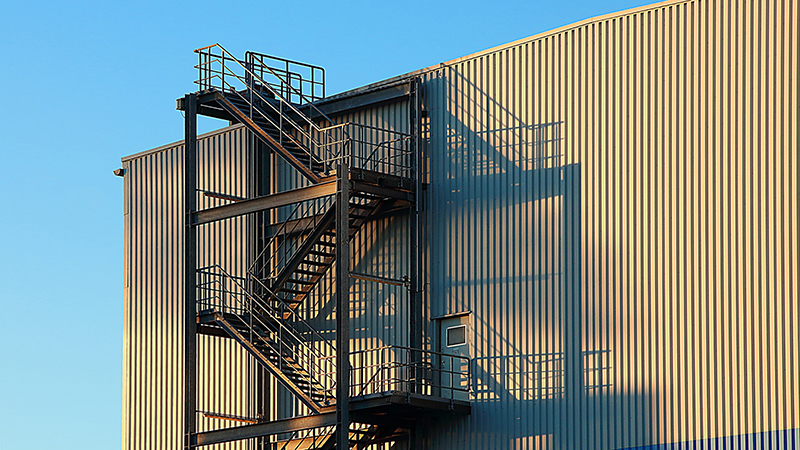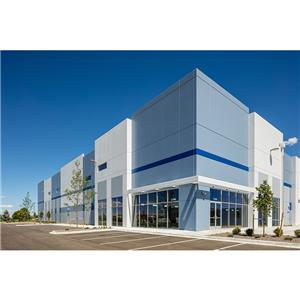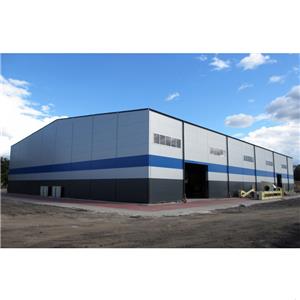Exploration of steel structure corrosion and fire protection issues
Steel structure has been more popular among people, but because the steel structure corrosion problem has been a problem in the industry, the material itself is poor corrosion resistance, heat resistance is not fire-resistant shortcomings, if the project application can not properly handle the steel structure corrosion and fire protection problems, will directly affect the safety and durability of the project. As the steel surface cladding after the steel structure corrosion and fire protection issues.
A, the steel structure of anti-corrosion measures
1. Hot dip zinc anti-corrosion treatment
The zinc layer in the atmosphere protects the steel for a long time and is effective for about 10 years. Although the hot dip galvanizing method protects the steel, it has certain shortcomings, as the volume of the galvanizing tank is not very large and the volume is limited to small steel structures, and can only be processed in a fixed plant. The test results showed that after a certain period of time, the weight lost by the untreated steel was much greater than the weight lost by the steel treated with hot dip zinc, which showed that the zinc layer of the steel was very protective against corrosion. After the study, it was found that carbon, silicon or phosphorus in the steel have a catalytic effect on the Fe-Zn reaction, sulfur has no effect on the reaction, while manganese, chromium or nickel can have a certain effect on the thickening of the coating, titanium and vanadium have basically no effect on the hot-dip galvanizing of rigid materials, so different steel materials must adopt different galvanizing processes, otherwise they will not play a protective role.
2. Thermal spray treatment
The raw material used for thermal spraying of steel materials is zinc, aluminum or zinc-aluminum alloy. This technology uses a heat source to dissolve zinc, aluminum or zinc-aluminum alloy by heating, then atomizing the molten particles, and finally spraying the atomized particles onto the steel surface to form a special surface protection layer of a certain thickness. This layer not only can play a physical isolation effect, but also can prevent the occurrence of electrochemical reaction, playing a double layer of protection for steel materials. The steel material is mainly treated by thermal spraying using the arc spraying method and flame spraying method. This method makes up for the shortcomings of the hot dip zinc treatment method, which is not affected by the size of the storage tank or the size of the steel material, and also has the advantage of easy construction. By thermal spraying steel material with zinc and aluminum to obtain zinc-aluminum alloy coating on the surface of steel material, steel material with zinc-aluminum alloy coating and steel material with only zinc coating or only aluminum coating were put in the same environment for experiment, and after the experiment, steel material with alloy coating and steel material with single coating were compared, and it was found that the alloy coating has better protection effect on steel material, and zinc-aluminum alloy coating not only With thermal spraying zinc coating good electrochemical protection, and thermal spraying aluminum coating of high strength corrosion prevention effect.
3. Paint treatment
A layer of paint on the surface of the steel material is also a good means to prevent corrosion of steel materials, not only to protect the steel material can also make its appearance more beautiful. The general traditional method is to paint the steel material with three layers of paint, the first layer is the primer, the second layer is the intermediate paint, the third layer is the surface paint, the role of each layer of paint are different. The first layer of paint is mainly used to protect the steel material from rusting, the intermediate paint is mainly used to increase the thickness of the paint to further strengthen the rust prevention ability, and the top layer of surface paint can prevent the corrosive medium from entering the steel surface, and also can beautify the rigid material, making the whole building structure more beautiful. These three layers of paint coating can basically achieve the effect of preventing the corrosion of steel materials. Before painting, we must understand the material of steel, then choose the suitable primer, intermediate paint and top coat, and paint the steel material in a reasonable way.

(D) Thermal spraying aluminum (zinc) composite coating on steel
This method is similar to the previous one, that is, first sandblasting and rust removal on the surface of the steel member to reveal its metallic luster and bristle, then melting it and blowing it with compressed air to attach to the surface of the steel member to form a honeycomb aluminum (zinc) spray layer. Finally, the capillaries are filled with paint such as epoxy resin or neoprene paint to form a composite coating. This method cannot replace the inner wall construction, so necessary measures are taken to avoid inner wall corrosion. This method is more adaptable to the size of the components, the size is not limited, and it does not produce thermal deformation, but its industrialization is low and it is influenced by the operator's situation.
(E) the choice of good anti-corrosion materials
The anti-corrosion layer of steel members should be combined with the specific situation to paint coating, composite protection layer, metal protection layer. Brush anti-corrosion coating is the most current anti-corrosion practice for steel structures. Paint is applied to the steel surface to form a protective film to protect the steel structure. The primer and topcoat make up the anti-corrosion coating. The primer is mainly to make the paint film and the base and topcoat can be closely combined, so it must have good adhesion, and also have corrosion resistance to prevent rusting from occurring. The top coat is mainly to protect the lower layer of the primer, so it should have impermeability and resist physical and chemical decomposition caused by weathering. The current development situation, to use synthetic resin to improve the weathering resistance of the medium, you can choose the composite coating to improve the anti-corrosion performance and extend the life of use.
(F) the transportation process of steel structure corrosion
Steel structure in the process of processing, transportation and storage may be subject to corrosion, the surface is very easy to be oxidized, rust mold-making residual model sand, welding slag, dust and oil and other pollutants, to deep to ancient attachment to the work of the build, before painting it is necessary to treat the surface of the workpiece to make it clean, otherwise it will affect the bonding force and corrosion resistance of the coating and the base metal, and Otherwise, it will affect the bonding and corrosion resistance of the coating to the base metal, and may lead to corrosion of the base metal on top of the coating, resulting in spalling of the coating and affecting the catching and unloading performance and service life of the workpiece. This requires the workpiece to be painted before the surface treatment to ensure quality, and can make the life of the product can be extended.
Second, the fire resistance of the steel structure processing
Although steel is non-combustible, but its fire resistance is particularly poor, the strength of steel and elastic modulus and other mechanical properties indicators will change greatly with the change of temperature. Generally speaking, when the ambient temperature exceeds 260℃, the ultimate strength and yield point of steel will have a significant downward trend, and when the temperature exceeds 600℃, the strength of steel will drop to almost zero, while the plasticity and toughness will be great, and the steel will lose its bearing capacity, which will cause the building to collapse or cause other accidents. Therefore, in order to avoid the deformation and even failure of steel structure due to high temperature, and to ensure the stability and safety of steel structure, we must take effective fire prevention measures to improve the fire resistance limit of steel materials. Through the study found in the mixed organization, especially the organization of fine particles distributed diffusely, the dissolution of alloying elements such as molybdenum in the solid steel structure can improve the fire resistance of steel materials, in addition, it is also found that the precipitation of molybdenum and carbon in steel materials at high temperatures can strengthen the strength of steel materials, so the appropriate addition of some alloying elements such as molybdenum and copper in the production of steel materials is a means of treatment to improve the fire resistance of steel materials. By studying the amount of molybdenum and niobium in steel materials on the influence of the refractoriness of steel structures, especially at high temperatures, it was found that the room temperature yield strength, tensile strength and yield strength at 600 ℃ of steel structures are increased with the increase in molybdenum content, but the toughness has decreased; in steel materials if the content of platinum is increased, the number of bainite also increased; at high temperatures, steel materials in stable fine The carbide of niobium can also effectively improve the high temperature strength of steel, adding a single molybdenum or niobium in steel materials to improve the effect of high temperature resistance of steel materials is not very good, so it should be molybdenum, niobium mixed into the steel material, this method to improve the high temperature resistance of steel materials and fire resistance have very good results. So in the production of steel should be appropriate to add some alloy, the building strictly use such steel materials, so that the fire resistance of steel structures can be achieved, to ensure the overall safety performance of the building.
Steel structure anti-corrosion in addition to using the above methods, but also pay attention to the design of the component scale of the division to be coordinated with the anti-corrosion process, reasonable to avoid welding lamination surface, etc.. In summary, since we are clear that the steel structure has the disadvantage of easy to be corroded, poor fire resistance, we must pay attention to the harm caused by this shortcoming, so we have to take certain measures to prevent the problem before it happens!




